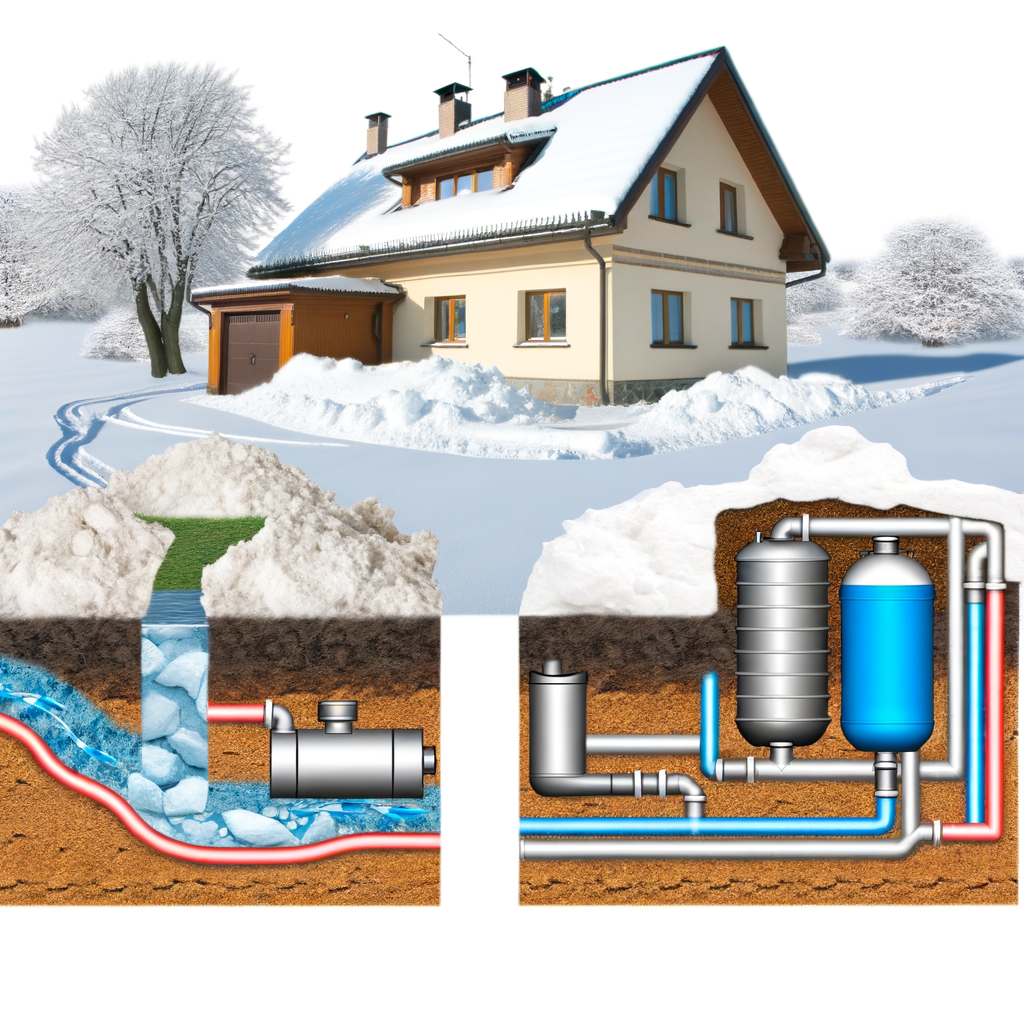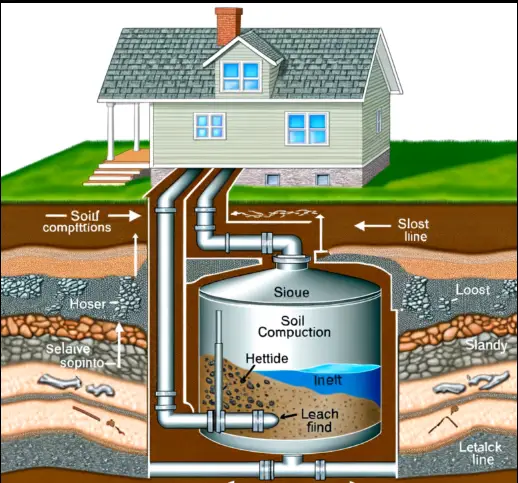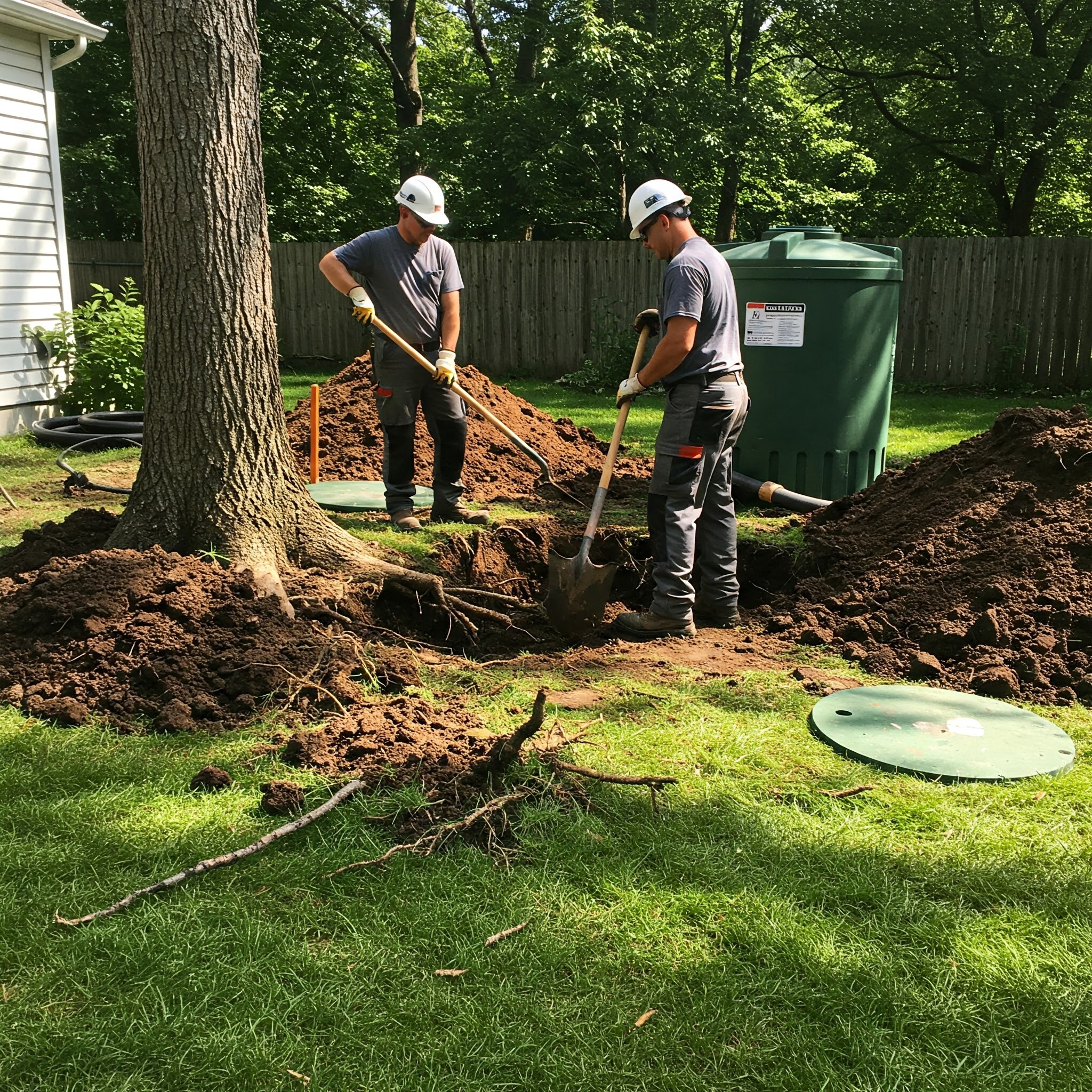Winter Care for Septic Systems: Preventing Freezing and Damage
When temperatures drop and snow starts piling up, your home’s septic system could be in more danger than you think. A single freeze-up can lead to thousands of dollars in repairs—and a household plumbing disaster.
But the good news? Most winter septic system issues are entirely preventable with the right knowledge and preparation.
In this guide, you’ll learn how to winterize your system, spot the warning signs of trouble, and take proactive steps to avoid costly damage before it starts.
How Cold Weather Affects Septic Systems
Cold weather brings unique challenges that can compromise the performance and longevity of your septic system. One major concern is freezing. When temperatures drop below freezing, key components like pipes, lines, and even the tank itself can freeze solid. This not only disrupts function but can physically damage your system.
Another often-overlooked issue is the slowdown of bacterial activity. The bacteria that help break down waste in your septic tank are less active in colder environments. This can cause solids to accumulate faster, increasing the risk of clogs or overflow.
Snow may seem like an insulating blanket, but excessive snow cover, especially if it’s compacted by foot or vehicle traffic, can create additional pressure on your system, harming drain fields and piping.

Signs Your Septic System May Be at Risk in Winter
Winter septic issues often announce themselves gently—at first. A slow-draining sink or gurgling toilet might not mean much during the warmer months, but in winter, they could indicate a frozen pipe or a stressed drain field.
Foul odors near the drain field or inside the home are another serious sign. They may mean the system is backing up—a red flag that waste water isn’t moving properly through the system, possibly due to freezing or blockages.
If you notice frost directly above the septic tank or drain field when there hasn’t been consistent cold air exposure, that’s another indication of heat loss and potentially a frozen or malfunctioning system below.
Pre-Winter Septic System Preparation
Start by scheduling a professional inspection and pumping before the freezing temperatures arrive. This helps ensure the tank isn’t overloaded going into winter, reducing your risk of clogs and backups.
Insulating pipes and exposed tank components can significantly reduce their risk of freezing. You can use foam sleeves or specially designed insulation blankets to protect vulnerable areas.
Ensure that surface water from melting snow or rain is directed away from the drain field. Water pooling in this area can freeze and cause soil compaction, negatively impacting the system’s drainage abilities.
Finally, avoid driving or placing heavy objects over the septic system footprint. Compacted soil can damage the pipes and also reduce the insulation capabilities of the land above your system.
Winter Maintenance Tips for Septic System Owners
Limit your household water usage during the winter months to prevent overwhelming the system. Too much water entering your system at once can cause partial freezing and backups.
Interestingly, snow can help—if it’s left undisturbed. A fluffy layer of snow provides natural insulation, so avoid shoveling or plowing over the tank and drain field unless necessary.
Use warm water appliances like dishwashers or washing machines routinely. Their heat helps keep the system thawed and functioning. Space out usage to avoid flooding the system with water all at once.
Avoid the temptation to pour chemicals or antifreeze into your system. These substances can kill the helpful bacteria that your septic system depends on and cause more harm than good.
Dealing With a Frozen Septic System
The warning signs of a freeze-up include total backups, non-flushing toilets, and frozen toilets or drains. If you encounter these issues, it’s essential to act fast—but not recklessly.
Safe thawing techniques include using a heat tape or heated blankets on exposed pipes, and in some cases, applying space heaters in crawl spaces where pipes are located. However, these should only be used safely and according to the instructions.
Never use open flames, torches, or salt to thaw your system. These methods are dangerous and can cause harmful chemical reactions or even fire hazards. Severe damage to pipes and components can also occur.
When in doubt, call a licensed septic professional. Trying to fix a frozen system yourself can often make the damage worse.
Common Mistakes to Avoid During Winter
Driving over your tank or drain field—even just once—can compact the soil, crack pipes, and collapse components. Mark off these areas during the snow season to avoid accidental damage.
Don’t ignore warning signs like foul smells or slow drains. Early detection is your best defense against severe damage and messy backups.
Skipping routine maintenance because of cold weather is a big mistake. Fall is the perfect time to get your system inspected and drained if needed.
Another major misconception is believing that additives can “fix” frozen systems. Most septic additives promise performance they can’t deliver and may even damage your system by interfering with the natural bacterial balance.
Long-Term Strategies for Winter-Proofing Your Septic System
Adding insulation panels or installing septic tank risers can shield critical components from extreme cold. These upgrades may seem costly upfront, but they pay for themselves by reducing the risk of expensive winter repairs.
If you live in a severely cold region, consider upgrading to a system designed for winter resilience. Modern designs feature better insulation, deeper pipe installations, and improved flow management.
Also, don’t underestimate the protective value of covering your drain field with a thick layer of mulch or even planting grass over the area. These measures add insulation and reduce the soil’s exposure to freezing temperatures.
FAQs About Winter Septic System Maintenance
How often should I pump my septic tank before winter?
Most septic systems should be pumped every 3–5 years. However, if your tank is nearing capacity, it’s best to schedule a pump before winter to avoid overflows and freezing-related damage.
Can septic systems work properly in harsh climates?
Yes, with proper design and regular maintenance, septic systems can function effectively even in very cold climates. Insulation, depth, and water usage control are key.
Is snow protective or harmful to septic systems?
Snow can be beneficial. A couple of feet of fluffy, undisturbed snow acts as a natural insulating layer. However, compacted snow from vehicles or snow plows can harm the drain field.
Conclusion
Winter doesn’t have to be a stressful season for septic system owners. With proper preparation—like pre-winter inspections, insulation, and careful maintenance—you can drastically reduce the chances of freezing and permanent damage.
Being proactive is far cheaper and easier than dealing with a backed-up or frozen septic system in January. Don’t wait until there’s ice in your pipes—start preparing now.
As the USDA states, “Preventive maintenance is the single most important factor in the effective operation of a septic system.” Get ahead of the cold and consult a septic system professional before winter strikes—your future self will thank you.
“`




